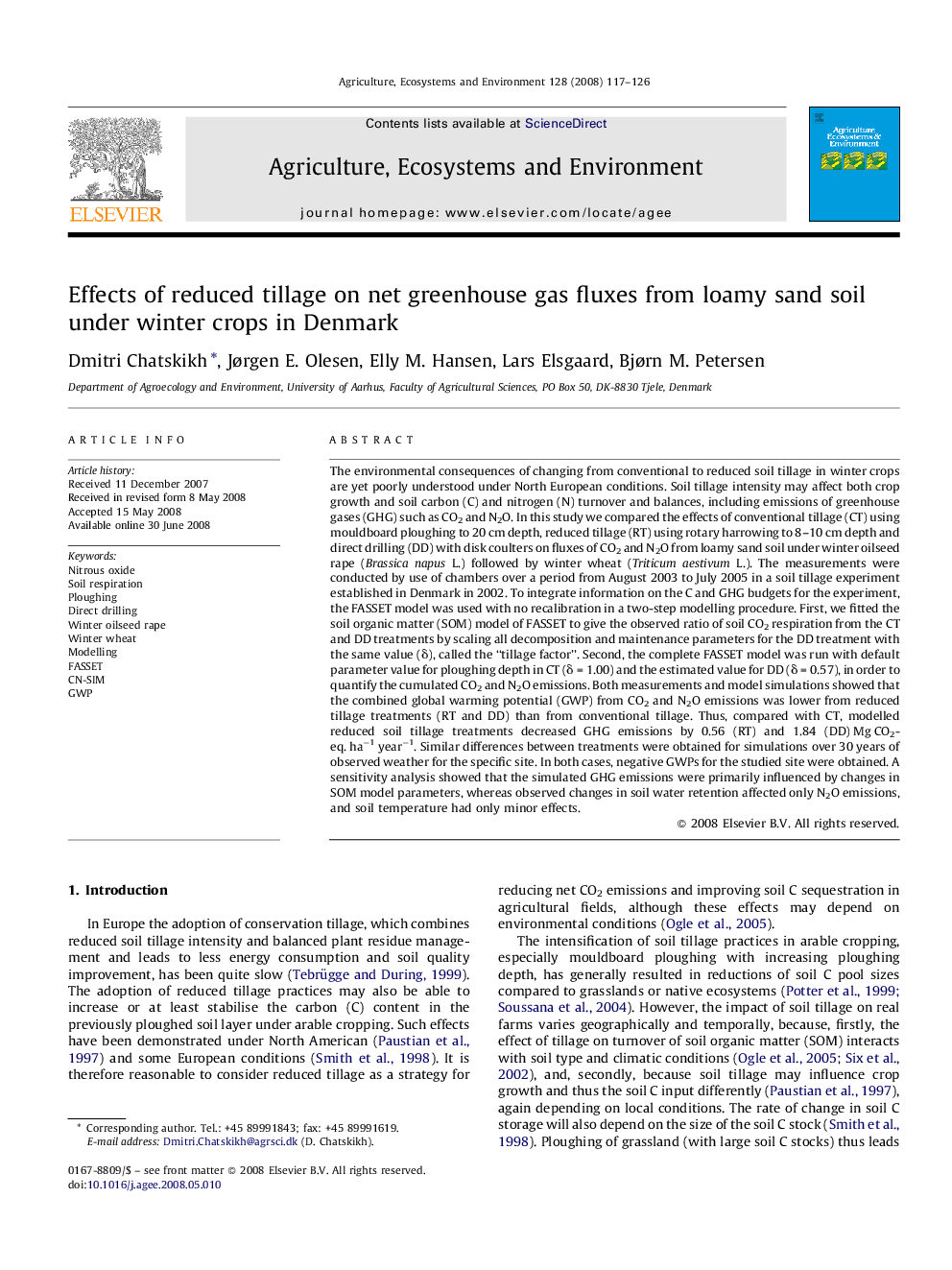| Article ID | Journal | Published Year | Pages | File Type |
|---|---|---|---|---|
| 2415362 | Agriculture, Ecosystems & Environment | 2008 | 10 Pages |
The environmental consequences of changing from conventional to reduced soil tillage in winter crops are yet poorly understood under North European conditions. Soil tillage intensity may affect both crop growth and soil carbon (C) and nitrogen (N) turnover and balances, including emissions of greenhouse gases (GHG) such as CO2 and N2O. In this study we compared the effects of conventional tillage (CT) using mouldboard ploughing to 20 cm depth, reduced tillage (RT) using rotary harrowing to 8–10 cm depth and direct drilling (DD) with disk coulters on fluxes of CO2 and N2O from loamy sand soil under winter oilseed rape (Brassica napus L.) followed by winter wheat (Triticum aestivum L.). The measurements were conducted by use of chambers over a period from August 2003 to July 2005 in a soil tillage experiment established in Denmark in 2002. To integrate information on the C and GHG budgets for the experiment, the FASSET model was used with no recalibration in a two-step modelling procedure. First, we fitted the soil organic matter (SOM) model of FASSET to give the observed ratio of soil CO2 respiration from the CT and DD treatments by scaling all decomposition and maintenance parameters for the DD treatment with the same value (δ), called the “tillage factor”. Second, the complete FASSET model was run with default parameter value for ploughing depth in CT (δ = 1.00) and the estimated value for DD (δ = 0.57), in order to quantify the cumulated CO2 and N2O emissions. Both measurements and model simulations showed that the combined global warming potential (GWP) from CO2 and N2O emissions was lower from reduced tillage treatments (RT and DD) than from conventional tillage. Thus, compared with CT, modelled reduced soil tillage treatments decreased GHG emissions by 0.56 (RT) and 1.84 (DD) Mg CO2-eq. ha−1 year−1. Similar differences between treatments were obtained for simulations over 30 years of observed weather for the specific site. In both cases, negative GWPs for the studied site were obtained. A sensitivity analysis showed that the simulated GHG emissions were primarily influenced by changes in SOM model parameters, whereas observed changes in soil water retention affected only N2O emissions, and soil temperature had only minor effects.
